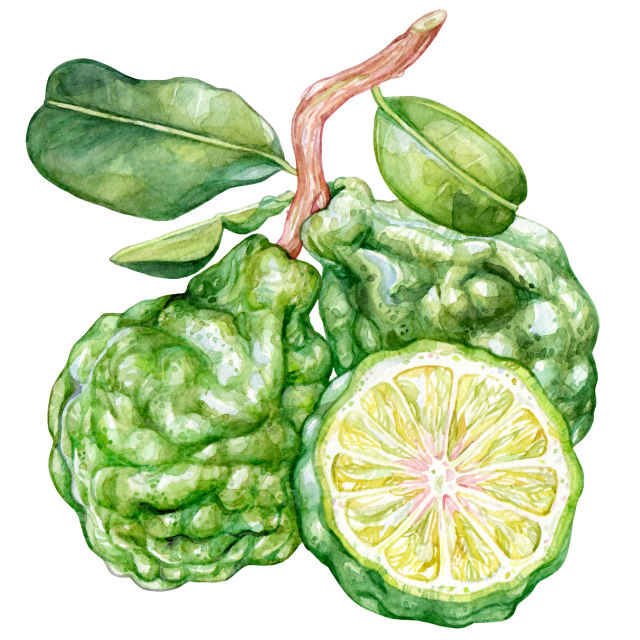Lime

Latin name: Citrus x latifolia
Other names: Persian lime
Uses: fruit, juice, spice (leaf and zest)
What are limes?
When we say “lime,” we’re usually talking about Persian lime; makrut lime and Key lime are different species, but most citruses are hybrids anyway, so it’s all neither here nor there. In fact, limes are just the product of crossing pomelo, citron, and mandarin oranges — all kissing cousins in the Rutaceae family (same as curry leaf and Sichuan peppercorn).
Why are limes healthy?
Limes are packed with antioxidants like kaempferol and quercetin. Like all citrus, limes are also high in vitamin C, another powerful antioxidant that may benefit everything from your immune system to your heart and skin. Some of the flavonoids in limes may lower the risk of some cancers. And citric acid may inhibit the formation of kidney stones.
What do limes taste like?
Lime juice is sharp, bright, and acidic, and the oils in the skin have a complex green-woody, citrusy-geranium aroma. All these qualities are more pronounced in Key limes. It’s hard to pinpoint the exact aroma of a lime, considering that all citruses contain the same 49 volatile organic compounds and limes contain around 10 more of these scent-defining substances.
How do I use limes?
Depending on the recipe, simply slice, zest, or juice them. Most dishes rely on the acidity of freshly squeezed juice, but sun-dried whole limes (black limes) are another cool ingredient used in Middle Eastern cooking, bringing a slightly smoky, fermented tang to soups and stews — just smash them open like a walnut and crush them into powder with a mortar and pestle.
Because of their limey intensity, Key limes are a key (heh) ingredient in the eponymous pies — the bright acidity and sharp flavor pierce right through the rich custard; otherwise, you can use them just like a regular lime. The leaves of makrut lime are also very fragrant, imparting a woodsy-lime flavor to Southeast Asian soups and curries.
Limes are also a standard cocktail garnish; everything from the most austere vodka tonic to the foofiest umbrella drink is improved by a squeeze of lime. If you can get your hands on Indian sweet limes (mosambi), mix their juice with syrup and ice for making a popular South Asian drink.
What do limes pair well with?
Limes are the special ingredient in many spicy cuisines and pretty much anything touching cilantro: they’re a must-have for squeezing onto tacos and earthy posole; they brighten up fruit salsas and Caribbean bean dishes; and they make any plate of Thai noodles sing.
Where do limes grow?
The citrus that we think of as limes originated in South and Southeast Asia, and were brought West by Christopher Columbus. They were once mostly grown in Iran (hence the name Persian lime), but today most limes are grown in Brazil and Mexico. Because modern limes are generally seedless, they’re all grown from clones.
How to buy limes:
Look for bright green, aromatic fruit. Limes dry out as they age, turning grey-green and hardening. Citrus fruit is best stored in the fridge.
Surprising lime fact:
Be careful if you get lime oils on your skin — the high concentration of various furanocoumarin compounds (that give limes their lovely aroma) can react with sunlight to cause phytophotodermatitis and give you a painful, blistering rash.




